Ask anyone who lives in Des Moines what visitors should see, and the Sculpture Park will probably come up in conversation. You can find it on t-shirts, postcards, and promotional photos galore.

“It’s so accessible. There’s no fence, there’s no gate, there’s no admission, so people can walk through at any time,” says Christine Doolittle, director of marketing and public relations for the Des Moines Art Center.
The John and Mary Pappajohn Sculpture Park is located downtown, and it features an assortment of pieces from artists around the world. The park opened in 2009 and has been the site of countless photo-ops and midday strolls since.
Here are 10 little-known facts about one of Des Moines’ most well-known spots.
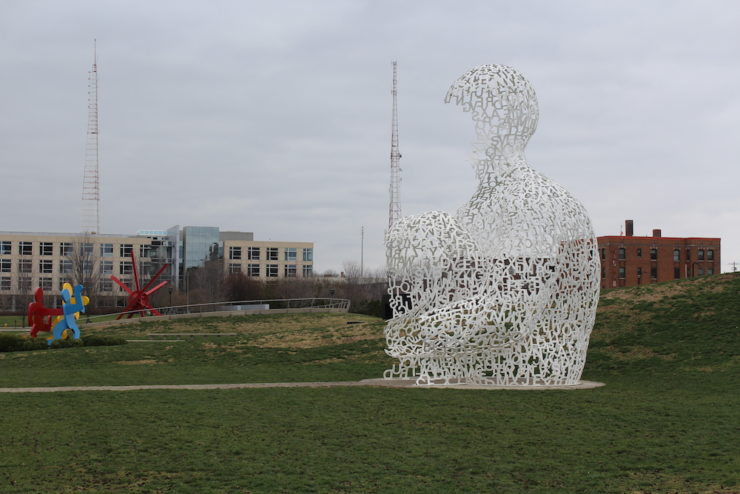
1. The sculptures were donated by John and Mary Pappajohn
No, the park wasn’t named for the pizza company. The Pappajohns donated all of the sculptures, many of which adorned their home and yard. “They began to notice that on Sundays cars would be lining up on the streets with people that wanted to drive by and have a look at the sculptures,” Doolittle says. At that time, the city was working to revitalize the Western Gateway area of downtown, and the Pappajohns agreed to donate some of their artwork in a partnership with the city and the Des Moines Art Center.
2. The Pappajohns are some of the world’s top art collectors
They made it on ARTnews’ list of top 200 art collectors each year from 1998 to 2014. The couple still has an impressive art collection.
3. Since opening, three new sculptures have been added
They’re Keith Haring’s Untitled (Three Dancing Figures, version C), Yoshitomo Nara’s White Ghost, and Olafur Eliasson’s Panoramic Awareness Pavilion.
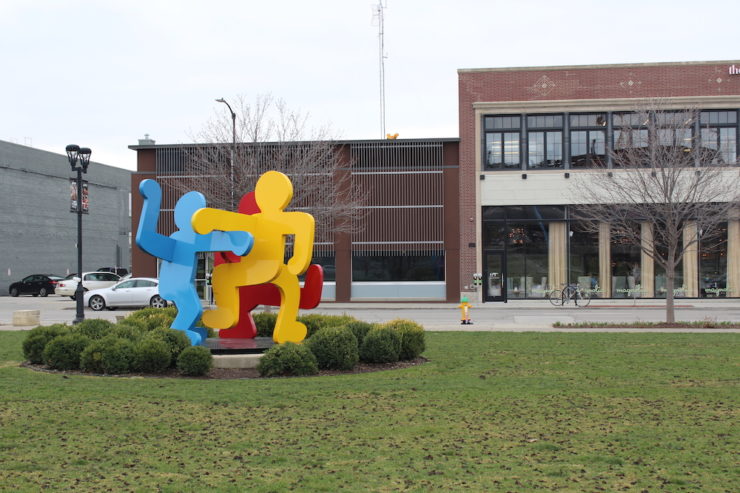
4. The park has an estimated value of $40 million
The 28 pieces donated by the Pappajohns is the most significant donation of artwork made to the Des Moines Art Center.
5. You can’t touch the sculptures—except for one
Seating For Eight, the granite seats surrounding a table, was made to be used and only becomes complete when the chairs are occupied. Artist Scott Burton is known for his large furniture sculptures.

6. The two horses were made from real wood—kind of
Ancient Forest and Juno were commissioned by John and Mary Pappajohn. The horses were first created with real sticks picked by artist Deborah Butterfield. The sticks were then cast in bronze and reassembled into the horse structures.
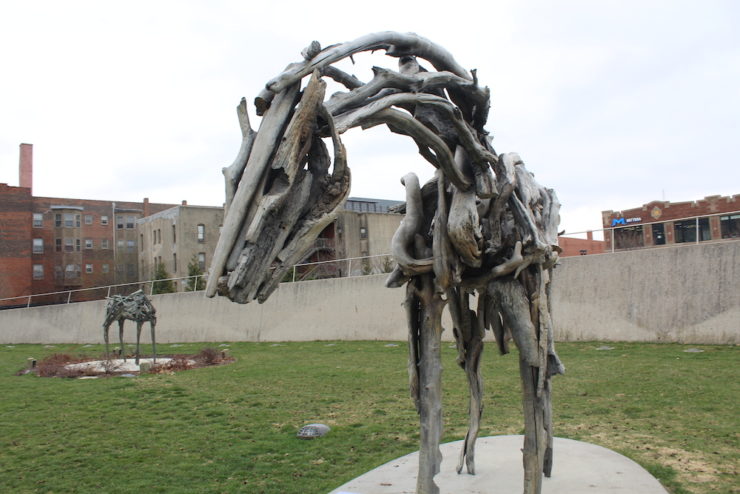
7. Those “creepy faces” are actually two of twelve
You know the two mask-like faces that look like they’re covered in fingerprints? They’re part of a series of 12 sculptures, each depicting a different distorted expression. Artist Ugo Rondinone named these sculptures in homage of the moon and how it affects time.
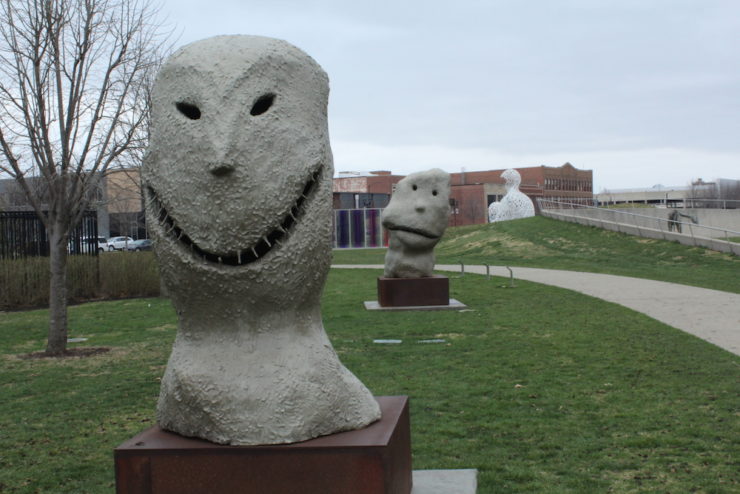
8. Landscaping was done by popular New York architects Diana Agrest and Mario Gandelsonas
Their work focuses on Urban Design and they have worked in the U.S., South America, Europe, and Asia. The park was designed to be seen by pedestrians and drivers alike. They created virtual “rooms” around the sculptures using the hills.
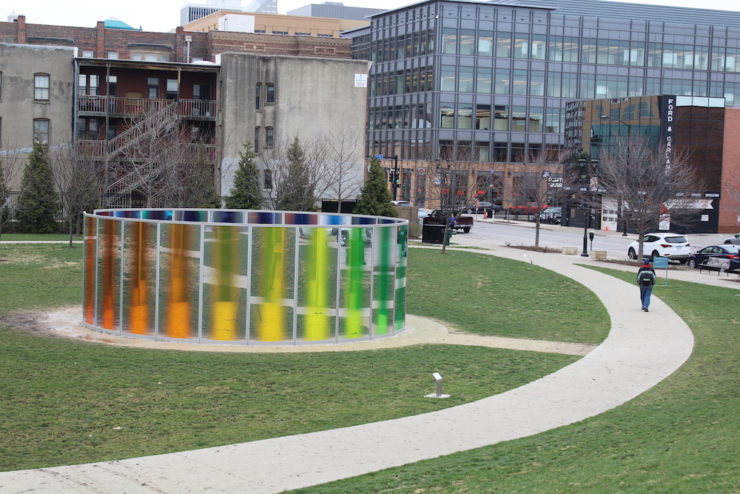
9. The white tree is based off of a real tree in Italy
Artist Ugo Rondinone—who did Moonrise, too—based this sculpture off a cast of a 2,000-year-old olive tree in the countryside outside Naples, Italy.
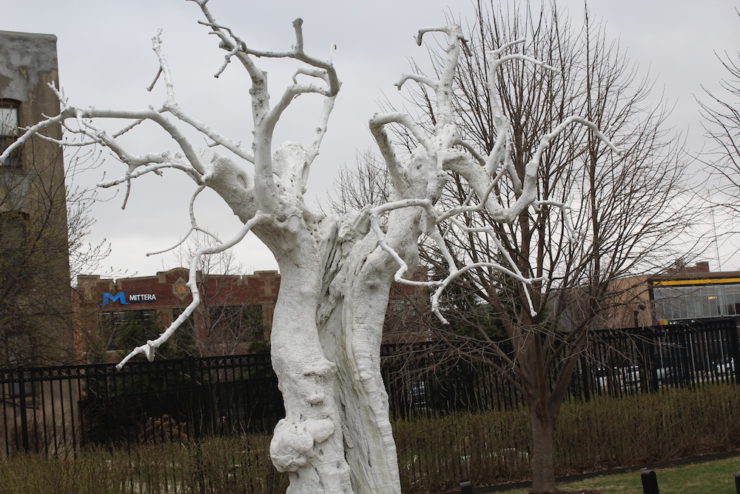
10. You can get a free tour of the park
All you need is a cell phone to learn all about the sculpture park. Audio tours are available anytime at 515-657-8264 or online. Starting in April through October, drop-in tours will also be available at the following times:
- Second Monday of the month from 12:30 to 1 p.m.
- Fourth Friday of the month from 2:30-3p.m.
- Schedule a guided tour here.
If you haven’t gotten a chance to check out this truly wonderful collection of larger-than-life pieces, take a free afternoon for a visit. And hey, maybe you can impress your friends with your new knowledge of the park.
